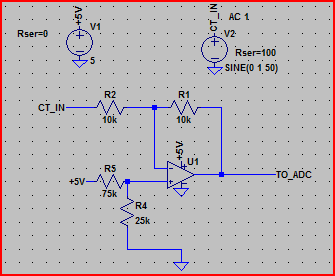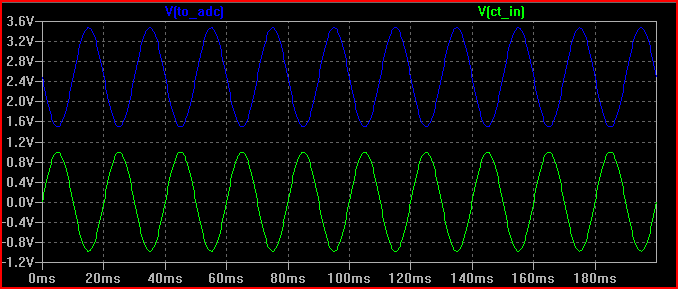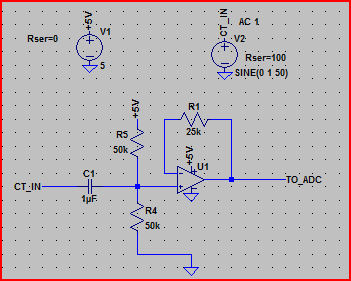Moving over to this question as it's related to my answer on your last one:
I checked to see if I could find some info on the CT and I discovered from the datasheet that that model is a voltage output version with a max output of 1V at 30A (assuming pk-pk AC), which means a transimpedance (current to voltage) amplifier is not what you want.
What you want is a simple buffer/level shifter.
Something like this would do:

Waveforms:

If you don't want an inverting buffer then you could try this kind of thing:

If you want to match the range of the ADC then you can add some gain to either. Careful with the inverting version as the DC bias will be amplified. For a gain of 2.5 a ratio of 6 for R5/R4 is needed. Something like R1 = 25k, R5 = 60k, R4 = 10k should be okay.
Note that you need to make sure your opamp is capable of a rail to rail output swing if you want to use the full supply range (an example part from memory is the MCP6021, this does have R2R in/out IIRC)
